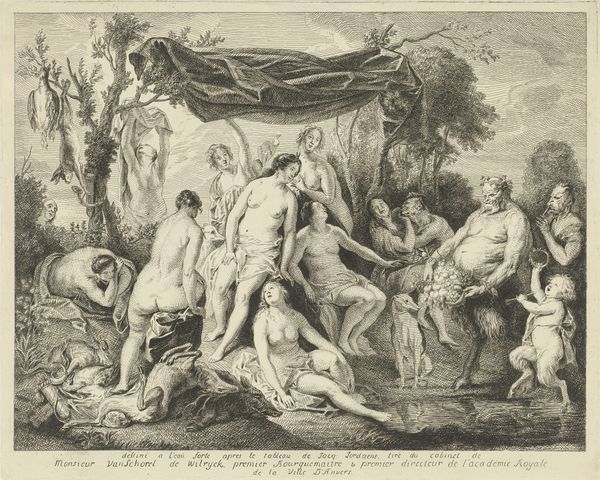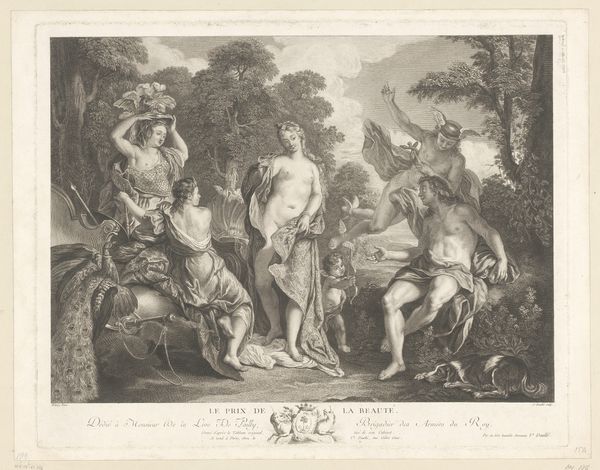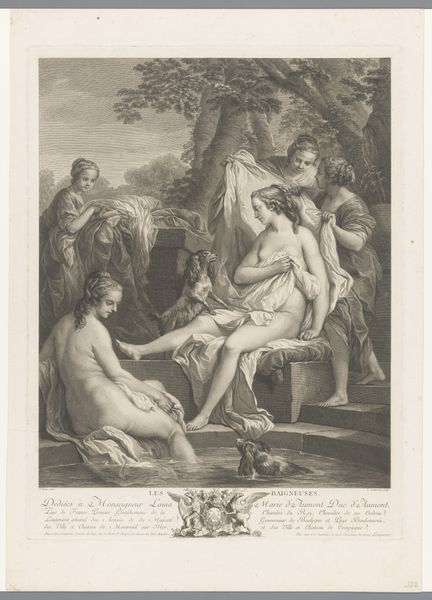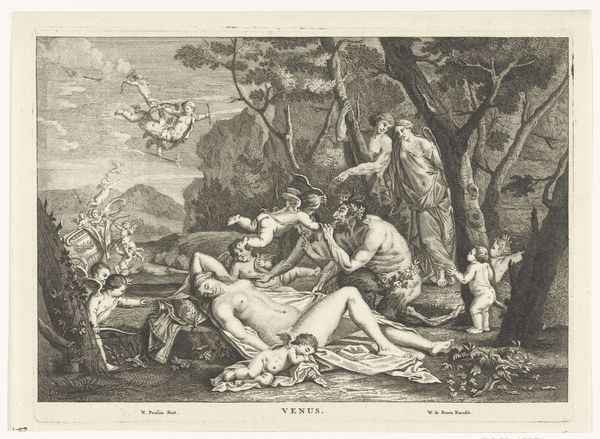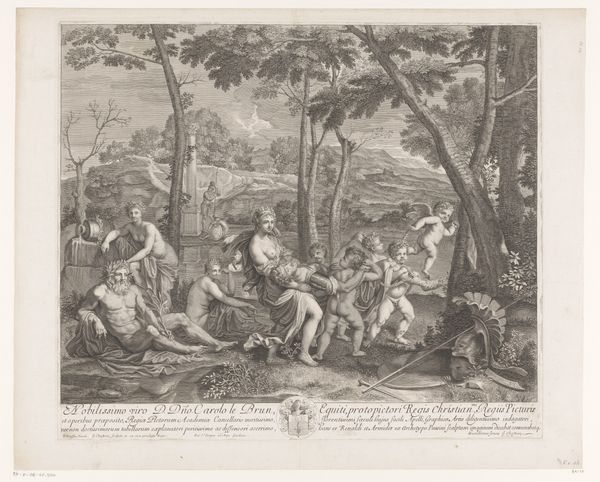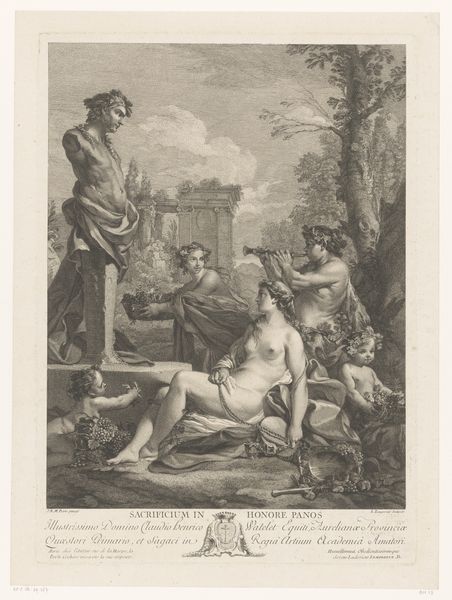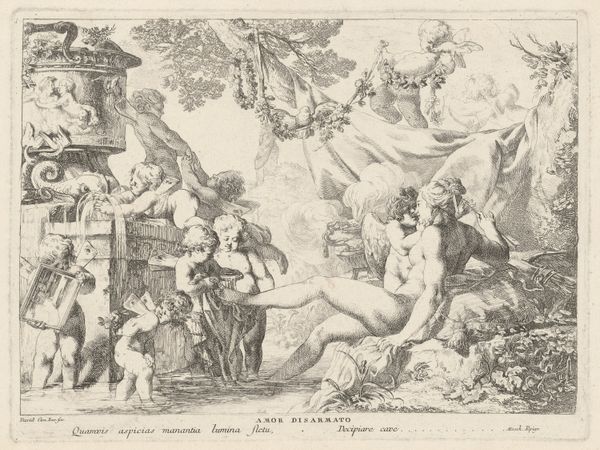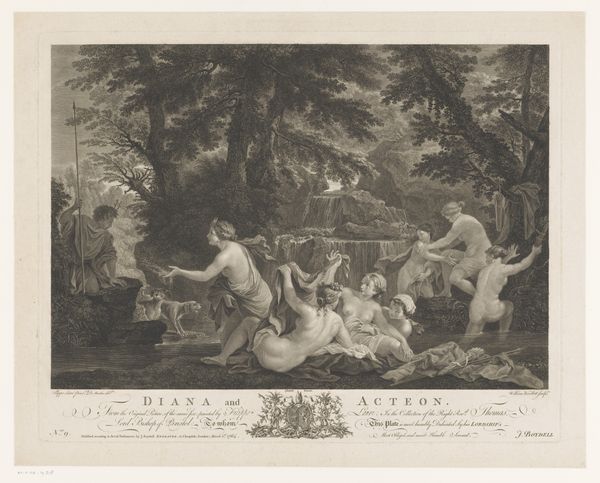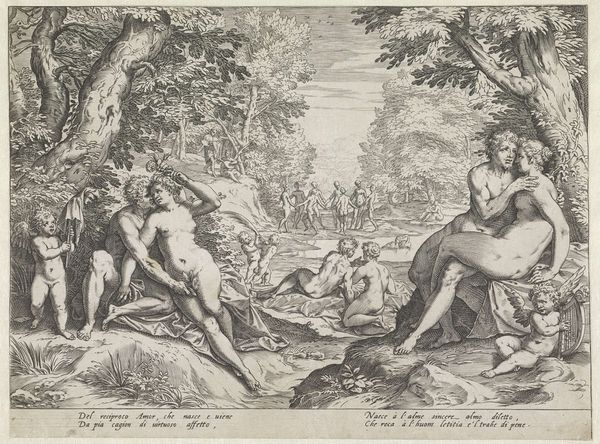
engraving
#
allegory
#
baroque
#
old engraving style
#
history-painting
#
nude
#
engraving
#
erotic-art
Dimensions: height 470 mm, width 522 mm
Copyright: Rijks Museum: Open Domain
Editor: Here we have Gaspard Duchange’s "Leda and the Swan," an engraving from 1711. The scene feels… theatrical, almost like a stage play, and yet also a bit unsettling. What do you see in this piece? Curator: I see a layered narrative, immediately recognizable yet unsettling as you point out. Leda's limp posture contrasts starkly with the predatory swan; their union begets destruction for all involved. Beyond the explicit, we must remember that throughout various renditions across millennia Leda serves as both victim and matriarch—a symbol, would you agree, of female agency constrained? Editor: Agency constrained... yes, I see what you mean. There are all those cherubs and nymphs surrounding Leda and the Swan; do they symbolize her fate, maybe even approval of what’s transpiring? Curator: Indeed. Look at them closely. The seemingly innocent cherubs are complicit; the lute-playing cherub almost serenades this divine violation. This scene echoes in cultural memory precisely because the visuals themselves—Leda, the Swan, attendants— become encoded symbols within a culture's moral tapestry. Duchange invites viewers not just to witness myth, but also, perhaps unconsciously, to participate in perpetuating it. Doesn't it ask difficult questions, not just about Zeus's actions, but about power, vulnerability and unspoken permissions throughout our history? Editor: That is definitely not a one-dimensional interpretation! I’ll be pondering all that you have brought to my attention, especially that duality of power and vulnerability, long after this audio guide is done. Curator: Exactly. That’s the eternal potency and quandary within symbolic representation.
Comments
No comments
Be the first to comment and join the conversation on the ultimate creative platform.
